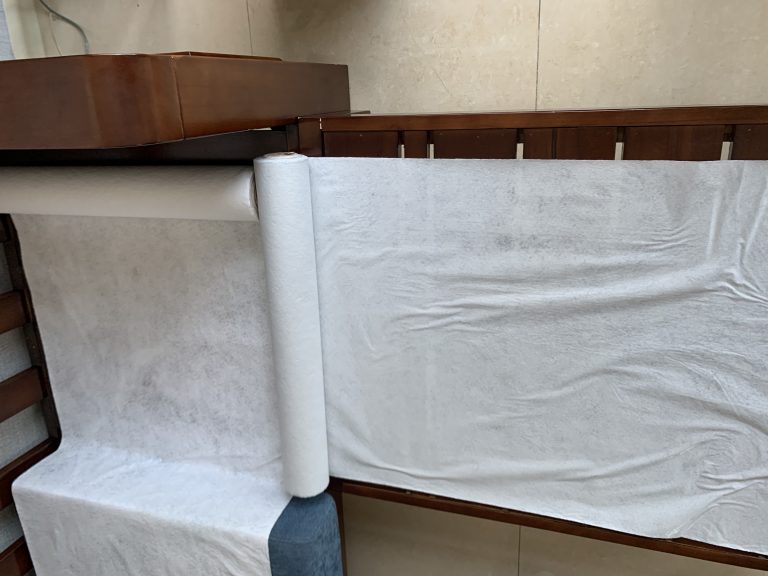Exploring the Benefits of Acupuncture for Fabric Manufacturing in Chinese Factories
The use of acupuncture in Chinese factories for fabric manufacturing has been gaining traction in recent years. This ancient Chinese practice has been used for centuries to treat a variety of ailments, but its application in the industrial sector is relatively new. Acupuncture has been found to have a number of benefits for fabric manufacturing in Chinese factories, including improved worker productivity, reduced stress levels, and improved overall health.
One of the primary benefits of acupuncture for fabric manufacturing in Chinese factories is improved worker productivity. Studies have shown that acupuncture can help to reduce fatigue and improve concentration, allowing workers to stay focused and productive for longer periods of time. Additionally, acupuncture can help to reduce stress levels, which can lead to improved morale and better performance.
Another benefit of acupuncture for fabric manufacturing in Chinese factories is improved overall health. Acupuncture has been found to be effective in treating a variety of ailments, including headaches, muscle pain, and digestive issues. By providing workers with relief from these ailments, acupuncture can help to reduce absenteeism and improve overall health.
Finally, acupuncture can help to reduce the risk of injury in the workplace. Acupuncture can help to reduce muscle tension and improve circulation, which can help to reduce the risk of strains and sprains. Additionally, acupuncture can help to reduce stress levels, which can help to reduce the risk of accidents.
In conclusion, acupuncture has a number of benefits for fabric manufacturing in Chinese factories. By improving worker productivity, reducing stress levels, and improving overall health, acupuncture can help to improve the efficiency and safety of the workplace. As such, it is an important tool for Chinese factories looking to maximize their productivity and minimize their risks.
How Acupuncture Can Help Improve the Quality of White Sticky Furry Rolls in Chinese Factories
Acupuncture is an ancient Chinese practice that has been used for centuries to treat a variety of ailments. In recent years, it has been gaining popularity as a way to improve the quality of white sticky furry rolls in Chinese factories. Acupuncture works by stimulating specific points on the body, known as acupoints, to promote the flow of energy, or qi, throughout the body. This can help to reduce stress, improve circulation, and promote healing.
When it comes to improving the quality of white sticky furry rolls in Chinese factories, acupuncture can be used to reduce stress and fatigue in workers. This can help to improve their focus and productivity, resulting in better quality products. Acupuncture can also help to improve circulation, which can help to reduce the amount of time it takes to produce the rolls. This can help to reduce costs and improve efficiency.
Acupuncture can also help to reduce the amount of waste produced in the factory. By improving circulation, it can help to reduce the amount of time it takes to produce the rolls, resulting in less waste. Additionally, acupuncture can help to reduce the amount of time it takes to clean up the factory, resulting in a cleaner and more efficient production process.
Finally, acupuncture can help to improve the overall health of the workers in the factory. By reducing stress and fatigue, it can help to improve their overall wellbeing, resulting in better quality products. Additionally, acupuncture can help to reduce the risk of injury in the factory, resulting in fewer accidents and a safer working environment.
Overall, acupuncture can be a valuable tool for improving the quality of white sticky furry rolls in Chinese factories. By reducing stress and fatigue, improving circulation, reducing waste, and improving the overall health of the workers, acupuncture can help to improve the quality of the rolls and the efficiency of the production process.
Examining the Role of Acupuncture in Strengthening the Durability of Roof Felt Rolls in Chinese Factories
The use of acupuncture in Chinese factories to strengthen the durability of roof felt rolls is an increasingly popular practice. This article will examine the role of acupuncture in this process, exploring the potential benefits and drawbacks of this method.
Acupuncture is a form of traditional Chinese medicine that involves the insertion of thin needles into specific points on the body. It is believed that this stimulates the body’s natural healing processes and can be used to treat a variety of ailments. In recent years, acupuncture has been used in Chinese factories to strengthen the durability of roof felt rolls.
The process involves inserting needles into the felt rolls at specific points. This is believed to stimulate the body’s natural healing processes and strengthen the felt rolls. The needles are believed to increase the strength of the felt rolls by stimulating the production of collagen, a protein that helps to strengthen and repair tissue.
The use of acupuncture in Chinese factories to strengthen the durability of roof felt rolls has several potential benefits. Firstly, it is a relatively inexpensive and non-invasive method of strengthening the felt rolls. Secondly, it is believed to be a safe and effective way of increasing the strength of the felt rolls. Finally, it is believed to be a sustainable and environmentally friendly method of strengthening the felt rolls.
However, there are also some potential drawbacks to using acupuncture to strengthen the felt rolls. Firstly, it is not a guaranteed method of increasing the strength of the felt rolls. Secondly, it is not a widely accepted practice and may not be accepted by all factories. Finally, it is not a quick process and may take several weeks or months to see results.
In conclusion, the use of acupuncture in Chinese factories to strengthen the durability of roof felt rolls is an increasingly popular practice. While it has several potential benefits, there are also some potential drawbacks that should be considered before implementing this method.

